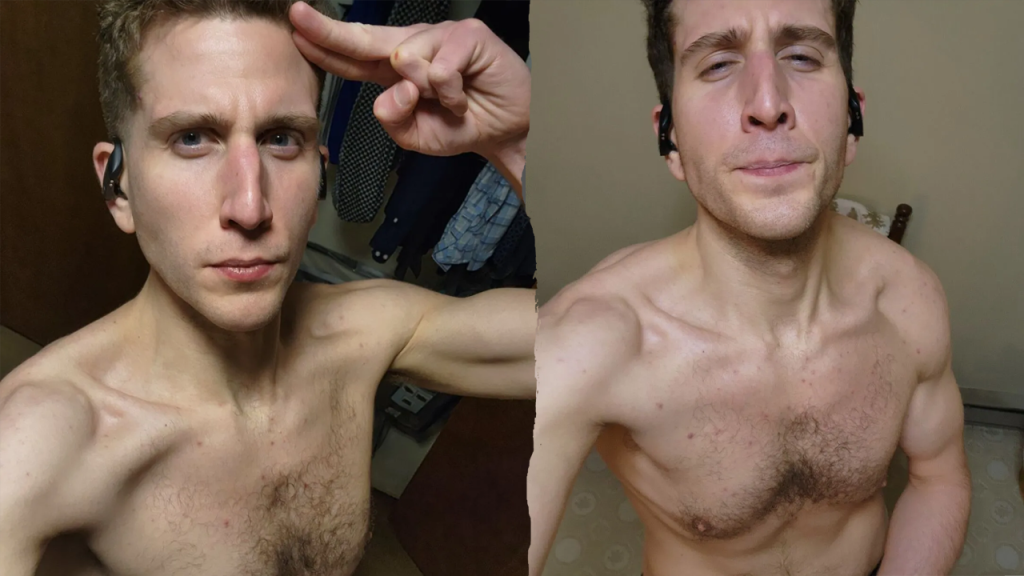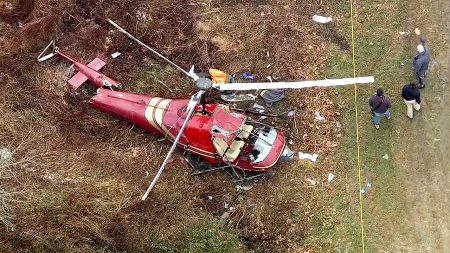Behind the Mask: Bryan Kohberger’s Disturbing Self-Images Revealed
A Chilling Glimpse into a Killer’s Private World
In a disturbing revelation that adds another layer to the horrific Idaho student murders case, newly released selfies show convicted killer Bryan Kohberger in unsettling poses around his Washington State University apartment. The images, first published by NewsNation and recovered from Kohberger’s phone after his December 2022 arrest, reveal a disturbing narcissism that experts say offers insight into his psychological state. In one particularly unsettling image, a shirtless Kohberger salutes the camera while standing in front of a closet filled with blue shirts, a visible cut noticeable on one of his knuckles. Other photos show him making contorted facial expressions, revealing yellowed teeth as he grins, or flexing his muscles with pursed lips and squinted eyes. These private moments, never shared with others, paint a portrait of a man seemingly obsessed with his own image in ways that digital forensics experts have described as reminiscent of fictional psychopath Patrick Bateman from “American Psycho.”
Digital Forensics Experts Uncover Disturbing Patterns
Jared and Heather Barnhart from digital forensics firm Cellebrite provided crucial insights into Kohberger’s photo collection during their investigation. Heather Barnhart specifically noted the similarity to the fictional character from “American Psycho,” describing how Kohberger would take “naked photos of himself flexing” from various angles, posing “just for himself” in what appeared to be acts of self-admiration. What made these images particularly unusual wasn’t just their content but their purpose—or lack thereof. Unlike typical selfies meant for social media or sharing with others, Kohberger’s photos remained private, suggesting they served a purely self-gratifying purpose. “He takes his shirt off, flexes his muscles, and takes a picture of himself, and then just goes back to whatever he was doing before,” Jared Barnhart explained to Fox News Digital, describing the behavior as “nonsense.” The experts characterized the photos as “narcissistic” and noted Kohberger’s unusual fixation with photographing himself from behind and in profile, creating a comprehensive catalog of self-images.
The Investigation That Led to Justice
These selfies represent just one element of the extensive digital evidence collected in the case against Kohberger. After his arrest at his parents’ home in Albrightsville, Pennsylvania, investigators conducted a thorough forensic examination of his phone, searching for browsing history, contacts, and any other data that might help build their case. The digital breadcrumbs, combined with other evidence including DNA and surveillance footage, ultimately contributed to the overwhelming case against him. The images themselves, while not necessarily incriminating on their own, offered investigators a glimpse into Kohberger’s psyche and private behaviors. They became part of the extensive collection of evidence that police gathered in their investigation of the brutal murders that shocked the college town of Moscow, Idaho, and captivated the nation’s attention for months as authorities worked to identify and apprehend the perpetrator.
The Victims and the Verdict
Behind the disturbing images of Kohberger lies the true tragedy of this case: the senseless murders of four promising young University of Idaho students. Xana Kernodle and Ethan Chapin, both 20, and Kaylee Goncalves and Madison Mogen, both 21, lost their lives in a brutal attack that devastated families, friends, and an entire community. Their futures were violently cut short in the early morning hours of November 13, 2022, when Kohberger broke into their off-campus residence and committed the murders that would eventually lead to his life imprisonment. Last month, Kohberger pleaded guilty to four counts of first-degree murder and one count of felony burglary, accepting a plea deal that required him to waive his right to appeal or seek sentence reduction. The court sentenced him to four consecutive life sentences plus an additional ten years, ensuring he will spend the remainder of his life behind bars. While the conviction brings a measure of legal closure, the families of the victims continue to grapple with their immeasurable loss.
Psychological Insights from Unusual Behavior
The strange collection of self-portraits offers potential insights into Kohberger’s psychology, though experts caution against drawing definitive conclusions based solely on these images. The pattern of taking numerous self-admiring photos without sharing them with others suggests a level of narcissism and self-absorption that some behavioral analysts find consistent with certain psychological profiles of violent offenders. The comparison to the fictional character Patrick Bateman from “American Psycho” is particularly striking, as both demonstrate an obsessive focus on physical appearance and self-image combined with a compartmentalized capacity for violence. While these photos alone don’t explain Kohberger’s horrific actions, they add to the composite picture of a deeply disturbed individual whose outward presentation masked dangerous tendencies. The contrast between his academic pursuits in criminology and his secret life of self-absorption creates a chilling juxtaposition that has fascinated and disturbed those following the case.
A Community’s Ongoing Recovery
As these disturbing images circulate, the Moscow, Idaho community and the University of Idaho campus continue their difficult healing process. The murders shattered the sense of safety in this college town, leaving lasting scars on students, faculty, and residents. While Kohberger’s conviction provides some measure of justice, the graphic details that continue to emerge from the investigation serve as painful reminders of the tragedy. The release of these selfies represents yet another chapter in the public’s understanding of this horrific case, though many question whether such intimate glimpses into the killer’s private life serve any purpose beyond morbid curiosity. For the families of Xana, Ethan, Kaylee, and Madison, each new revelation likely brings fresh pain even as it might help them comprehend the incomprehensible. As the legal proceedings conclude with Kohberger’s imprisonment, the community’s focus increasingly turns toward honoring the victims’ memories and rebuilding the sense of security that was so violently disrupted. The legacy of this case will continue to resonate through improved campus safety measures, ongoing support for the victims’ families, and a community forever changed but determined to move forward while honoring those they lost.









